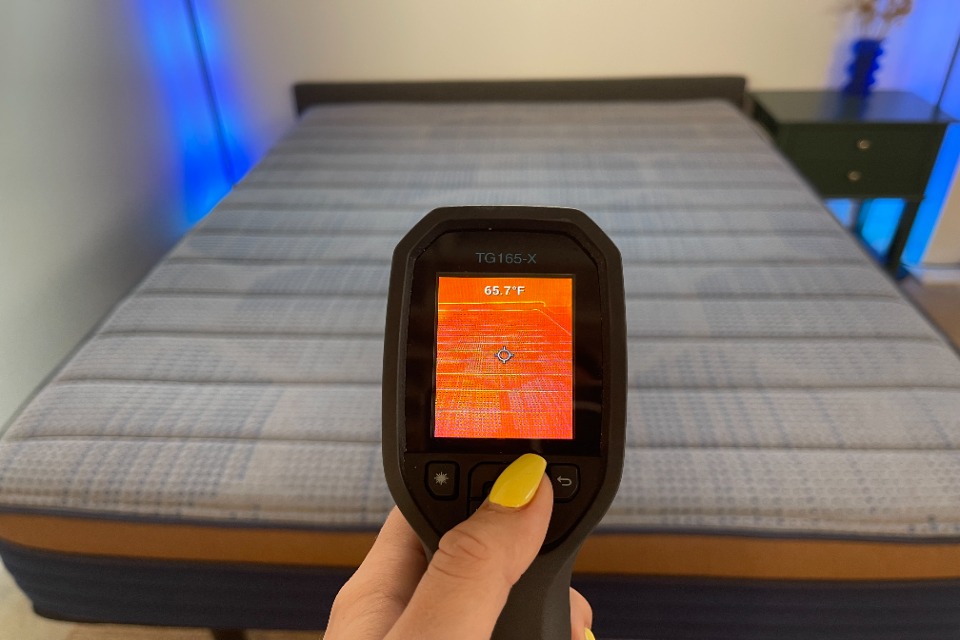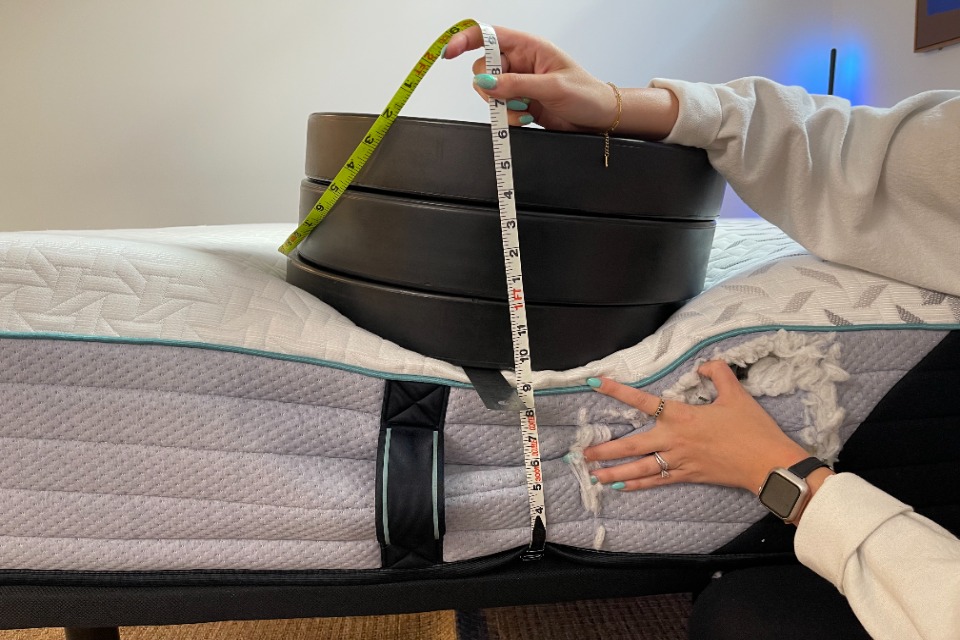Mattress Review Methodology
Sleep is essential to help you perform at your peak in the office, at the gym, or during daily activities. Unfortunately, though, finding the optimal mattress can be overwhelming. There’s only so much you can learn from a brand’s product page on the internet. While they may offer information on specs, customer reviews, and instructions, you don’t get a true feel for the product.
That’s where Fortune comes in with our reviews and best ofs. We get our hands on each and every product we review, giving it a full-on testing experience. Read on to see how we use our data and results to form objective product recommendations.
Our Testing Standards
We take a hands-on approach to product testing, allowing us to run every product through a real-world experience. We use a variety of testing methods to give us a comprehensive grasp of our mattresses, sleep accessories, and more. After all, the best way to understand a product is a thorough test run.
Availability and Accessibility
Gone are the days of hopping from one mattress store to the next. Besides, there’s not much information you can gather from lying on an in-store model for a few minutes at a time. So, while picking and choosing our top products, we made sure to prioritize brands that are available online and/or through a major retailer.
Our Mattress Testing Protocols
Here, we’ll walk you through the nitty gritty of the testing protocols used to understand and evaluate products. After our assessments are complete, we rate each product on a scale of 1–5 for each of the factors listed below.
Pressure Relief
Experiencing some muscle tension? You’re certainly not alone, which is why we test all our mattresses for pressure relief. Side sleepers may feel added pressure on their shoulders or hips, back sleepers tend to feel lower-back tension, and stomach sleepers often feel strain on their hips and chest. Depending on its construction, materials, and firmness level, your bed can offer some relief.
To test tension spots on a mattress, our team uses a pressure map. This tool shows exactly where pressure builds on a tester’s body by using heat-mapping technology. On the map, high-pressure areas (more than 78.8 mmHg, which is a unit for measuring pressure) show up as bright orange and red. While our testers can describe where they feel the most pressure, we like having objective data to support their claims, too.
Our testers range from lighter-weight to higher-weight, so we get a clear picture of how different body types experience the construction of each mattress.
Motion Isolation

Motion isolation is key when you sleep next to a partner who tends to toss and turn at night. We like to assess how much a mattress is (or isn’t) able to isolate motion, minimizing the amount of movement transferred across the entire bed.
We use several tests to analyze motion transfer, including a motion test and a couple’s test. For our motion test, we place a large clear container filled with plastic balls on one end of the bed. We have our tester get into and out of the opposite side of the bed. Then, our team notes how much the balls moved within the container. For each round of testing, we try to keep our tester’s movements as consistent as possible across products.
During the test, if the balls remain still, the mattress gets a 5-star score. If the balls aggressively move around the container through heavy movement, the mattress earns a 3. Finally, if some of the balls bounce or spill out of the container, the product receives a 1 rating.
Then, we have our couple’s test to replicate real-world scenarios. A tester lies on one side of the mattress wearing a blindfold and noise-cancelling headphones. On the other side of the bed, another person makes a series of movements, including switching sleeping positions or standing up. From there, our blindfolded tester reports any motions they felt.
Bounce
Certain mattress models tend to have more bounce than others. They feel springier and offer more responsiveness. Having a certain level of bounce isn’t necessarily a good or bad thing—it just comes down to personal preference.
To test bounce, we dropped a medicine ball from a 6-foot height. Our team measures how high the ball bounces into the air after striking the mattress.
Generally, if the ball rebounds less than 5.99 inches, the mattress is considered to have extremely low bounce. According to many tests and product comparisons, average mattress bounce is around 9–11.99 inches, while high bounce is 15 inches or more.
Temperature Control
Materials matter when it comes to how hot (or cool) a bed sleeps. Generally, innerspring mattresses allow for airflow that can keep you cool. And memory foam mattresses are notorious for trapping heat. But new material technology has created advancements that allow for most types of bed to have some cooling features.

To test how well a mattress can stay cool, we use a thermal gun to record the temperature before and after the tester lies on a mattress for two minutes. Our testers also report how warm or cool they feel.
From there, we measure how long it takes for the mattress to return to the original temperature. If it takes 4 minutes or less to return to the baseline temperature, we rate the mattress a 5 for heat control. But if we see the product takes more than 7 minutes to return to the original measurement, it receives a 1 rating.
By combining these qualitative and quantitative tests, we can provide a more accurate assessment of the product’s temperature control.
Firmness
Firmness is one of the primary categories shoppers consider before investing in a new mattress. That’s for good reason: The bed’s feel determines how much support you’ll get from the mattress.
In order to assess mattress firmness, our team takes the brand’s firmness rating into consideration. Then, we have testers of varying weight categories subjectively report whether they agree with the brand’s scoring. Luckily, due to the high volume of mattresses we try, our team can get a good idea of the firmness spectrum on the market today.
Edge Support
Strong edges allow you to use the full surface of the mattress, curling up to even the very edge of the bed to sleep. The edge of the bed also supports us as we sit and stand up from the mattress.
When a bed’s edges are as supportive as the center, it indicates a more durable mattress. Outside of simply lying or sitting on the edge of each bed, we place weight plates on the mattress edge to measure how much it sinks. We test each mattress with a set of stacked plates (130–150 pounds) to replicate a real person’s weight, using a tape measure to note how much the edge dips.
If the mattress sinks 7.9 inches or more, we give the product a 1-star rating. But if it sinks less than or equal to 3 inches, it earns a 5.

As an additional measure of edge support, we have our testers sit and lie on the edge of the bed. They report how supportive the edge feels and how easily they can get up and off the bed.
Cost and Value
Some mattresses can burn quite the hole in your wallet. But considering you’ll spend around 8 hours (give or take) in bed each night, a good mattress is well worth the investment
But like we said, not every mattress works for every person. A mattress is probably “worth the money” if it’s the best mattress for your needs. Our testing methods are here to help you make the most educated decision possible.
We look at the mattress materials and construction, cutting each one open to see how claims hold up to the naked eye. We value brands that make their mattresses in America and use materials that are environmentally friendly. Mattresses also go on sale frequently, and we make it our job to help our readers get the best deals they can.